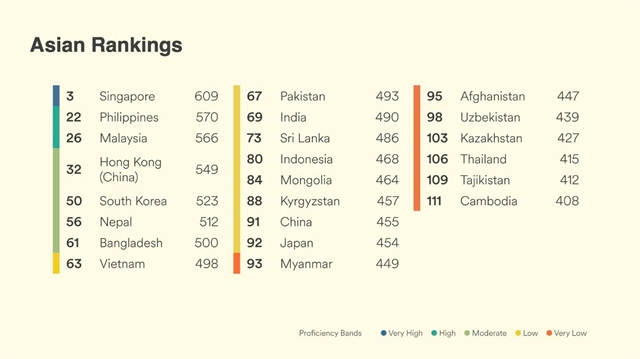 Life & Style
Life & Style

Sleep apnea is a potentially serious medical disorder in which breathing becomes very shallow or stops briefly during sleep. When this occurs, the sleeper is partly awoken and the brain commands the body to breath.
 |
| Dr. Hai Tran Pham – Photo by l’Hôpital Français de Hanoi |
By Dr Hai Pham*
----------------------------------------------
Sleep apnea is a potentially serious medical disorder in which breathing becomes very shallow or stops briefly during sleep. When this occurs, the sleeper is partly awoken and the brain commands the body to breath. However, sleep quality in such cases is compromised and other medical issues arise too. In some individuals, this can occur many times a night.
Unfortunately, many people don’t realise that they have a sleep disorder, let alone apnea. When left untreated, apnea can lead to long-term and even life-threatening conditions.
There are three kinds of sleep apnea: Obstructive Sleep Apnea (OSA), Central Sleep Apnea (CSA) and Mixed Sleep Apnea (MSA). Obstructive sleep apnea is the most common form, believed to affect approximately 4 per cent of men and 2 per cent of women. However, only about 10 per cent of people with OSA are believed to seek treatment, leaving the majority undiagnosed.
Obstructive Sleep Apnea occurs as repetitive episodes of complete or partial upper airway blockage during sleep. During sleep, an individual’s throat muscles relax, and the tongue and softer issues of the throat fall backward. During an apneic event, air is restricted from moving past the obstruction, reducing oxygen to the blood. This, in turn, signals the brain to partially awake and command the body to breathe. As the diaphragm and chest muscles need to work harder to force air past the obstruction, breathing usually resumes with a loud gasp, snort, or body jerk. Once a breath is taken the brain returns to sleep. This process can occur several times a night or hundreds of times a night, depending on the severity of the condition.
Central Sleep Apnea is less prevalent than Obstructive Sleep Apnea and occurs when the brain intermittently fails to command the muscles responsible for regulating breathing.
Mixed Sleep Apnea as the name suggest is a combination of Obstructive Sleep Apnea and Central Sleep Apnea.
What are the Symptoms of sleep apnea?
- - Snoring,
- - Excessive daytime sleepiness,
- - Irritability and frequent mood changes,
- - Headaches,
- - Restless sleep,
- - Poor concentration.
What are the causes of Obstructive Sleep Apnea?
There are many potential causes of Obstructive Sleep Apnea, including:
- - Excessive weight,
- - Enlarged tonsils, adenoids or tongue,
- - Sinus conditions.
What are the causes of Central Sleep Apnea?
Central Sleep Apnea is generally caused by pre-existing medical conditions that create an imbalance within the brain’s respiratory control centers during sleep, such as cardiac failure or neurologic diseases.
What are the risks of sleep apnea?
In addition to possibly feeling tired and groggy, sleep apnea also carries severe risk for the following:
- - High blood pressure,
- - Type 2 diabetes,
- - Heart disease,
- - Acid reflux,
- - Weight gain,
- - Depression.
What are the treatments for sleep apnea?
If you are experiencing sleep disorders, consult a pneumologist, who may order a sleep study, called polysomnography to enable a diagnosis. The examination will usually confirm whether you suffer from sleep apnea, and what type. Other tests may be prescribed to search for underlying medical conditions, such as cardiac failure, chronic pulmonary disease, neurological diseases, and hormonal imbalance.
The treatment options are varied and should be specifically targeted. Your doctor may work in collaboration with other members of the sleep team, including dentists, ENT specialists, cardiologists, nurses, and technicians. Your plan may include any combination of these treatments:
- - CPAP (Continuous Positive Airway Pressure) therapy,
- - Mandible orthesis,
- - Surgery,
- - Weight management,
- - Lifestyle changes.— L’Hôpital Français de Hanoi
*Dr Hai Tran Pham is a lung and allergy specialist working with French Dr Delphine Natali at l’Hôpital Français de Hanoi. Together they bring state of the art knowledge and treatment for airway conditions and allergies to our customers. If you have any questions or want to book an appointment with our doctors, please contact us at 84 – 24.3577.1100, or email us at contact@hfh.com.vn









